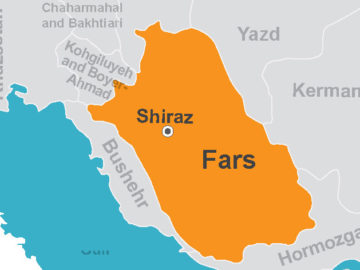
Traditional Skills of Carpet Weaving in Fars
Photo by eFesenko/Shutterstock
Fars Province is located in the southwest of Iran. Suitable condition and weather in the province led to the popularity of the place among various nomadic tribes such as Qashqai (the largest one), Khamseh, Afshar, and Abade. One of the main income sources of these nomads includes handicraft products and most importantly carpet weaving. Historically, the oldest Fars carpet discovered is over three hundred years old.
However, the oldest document mentioning the Fars carpets refers to the treasury list of Harun al-Rashid (766-809 CE), the fifth Abbasid Caliph. Two books dating back to the 10th century CE also indicate the extent of Fars carpets were spread in the past. One of them is written by Estakhri, the geographer of medieval Islam and the other by an anonymous writer is entitled Hudud Al-Alam Al-Mashregh El Al-Maghreb (the boundaries of the world from the east to the west).
Nowadays, Qashqai tribes weave the carpets that are known as the Fars carpets. This form of carpet weaving, both in terms of style and pattern, is an example of the exquisite nomadic art in Iran.
Qashqai weavers braid the carpet according to symmetrical knots known as Turkish knots, while in some exceptional cases, asymmetric knots are used as well. Fars woofs are mostly in red or blue and are woven on small horizontal looms as in this way, it would be easier to be carried when migrating and then re-setup in another spot. This feature is of salient importance for these tribes that have to migrate frequently.
The most notable feature of a Qashqai carpet is its colors, just like the area they live in their carpets are colorful, while carpets of other Fars tribes like Khamseh consist of darker colors. The main reason behind such difference is that for some tribes like Khamseh, carpet weaving is a serious source of income and so they need to meet the costumers’ wants and demands. In contrast, carpet is an applied tool for the Qashqai tribe; they have not changed their traditional patterns or colors.
Generally, carpets in Iran have a pattern of an octagonal medallion at the center and bergamot in each corner of the carpet. However, the exclusive traditional style of Fars carpets is based on a pattern known as Dastur. This pattern is divided into two major forms, one that follows the traditional patterns or regular motifs including Moharamat, Afshan, Mahi Darham, Botee, and herbal motifs. The other form refers to patterns with imaginary motifs including asymmetrical geometrical structures. In the case of Bakhtiari carpets, the central area is divided into several squares each with a different motif turning the carpets into a collection of motifs and patterns. Qashqai carpets, like Bakhtiari carpet, is a combination of motifs and patterns most of which are imaginary and asymmetrical.
The rug is an outcome of weaving warps and woofs. In mountainous areas of Fars like Darab, Eqlid, Abadeh cotton warps, and woofs are used. Nowadays, Shiraz, Abadeh, and Neyriz cities are the most famous locations to find authentic Fars carpets with traditional motifs and materials and female weavers who know how to apply a mesmerizing amalgam of designs and colors. The traditional skills of carpet weaving in Fars was inscribed in 2010 on the Representative List of the Intangible Heritage by UNESCO.


